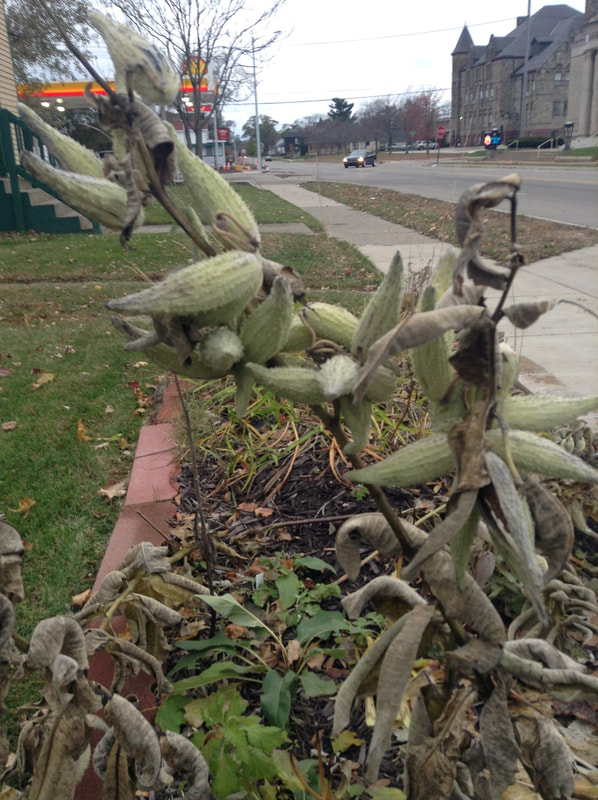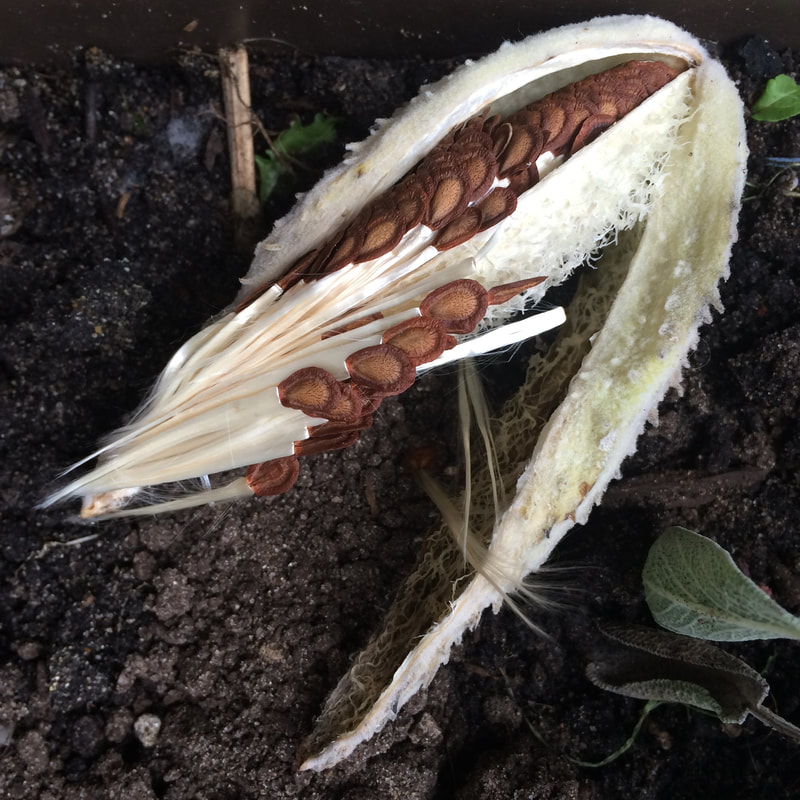|
Photos and story by Donna Iverson
It may not be the most beautiful plant in your garden, but Common Milkweed (Asclepias syriaca) has a lot to be said for it as a garden plant. First, Common Milkweed is native to the United States and if you want to introduce native plants to your garden or yard, Common Milkweed is a good place to start. Ecologists have been warning us for years that many native plants are endangered and being crowded out by invasive cultivars, and destroying the natural ecology of our neighborhoods. So growing native plants will help to restore that balance. If you have a brown thumb, Common Milkweed is easy to grow and may turn that brown thumb green increasing your confidence in gardening. It is an undemanding plant. It likes sun but will tolerate shade, doesn't need fertilizer and repeals harmful pests. In fact, it acts like a natural bug zapper protecting surrounding plants from infestation. It is a plant that pretty much takes care of itself. Common Milkweed is also drought resistant ..and with longer and hotter summers forecast, it won't need watering once it is established. Further, Common Milkweed isn't really ugly. In fact, in the summer it produces beautiful flowers that vary from white, to pink, to lavender sometimes on the same 6-foot stalk. And it smells delicious too. For those of you interested in foraging, the plant can be eaten when Immature. Once you start looking for milkweed, you will see it everywhere, in fields, in gardens, and along roadsides. It also grows on our dunes alongside of Lake Michigan beach grass. Be sure to ask before picking on private land, however. And it is illegal to gather milkweed seeds in federal or state parks. The young shoots, leaves, flowers and flower buds are edible when they are immature and most often cooked like greens, such as ochre. All parts of the mature plant are toxic so unless it is early spring, leave it be. For crafters, the milkweed stalk can be turned into cord or string. For history buffs, milkweed floss was used in WWII as a substitute for kapok in flotation vests. In the 1940's, over 5000 tons of milkweed floss was collected, mostly by children. Today, it serves as a hypoallergenic filling for pillows and even quilts. If you are contemplating starting a butterfly garden, milkweed is the foundation plant you will need. Monarchs can not survive without it. It also provides nectar for native bees, bumblebees and honeybees. It offers them protection to as the "milk" sap in the plant is toxic. Butterflies and bees which consume this nectar for food also become toxic to predators, like birds. If you want to start collecting, saving and planting native seeds, milkweed is one of the easier plants to do this with. The seeds are large and easily disengaged from the milkweed pod. And as milkweed is so easy to identify and collect seed pods, this could easily be a family activity. When collecting, be sure not to take all the pods but leave enough for the plants to reseed themselves the area they are growing in. Directions for collecting and growing milkweed seeds can be found at www.wildflower.org/learn/how-to-germinate-milkweeds. Or if you want an easier route, you could wait till spring and order plugs from the Muskegon Conservation District on 4725 Holton Road in Twin Lake. Check their website for ordering information. When you pick them up, just stick the plugs into the ground and water in. Simple enough.
0 Comments
Your comment will be posted after it is approved.
Leave a Reply. |
Archives
July 2024
Categories |


 RSS Feed
RSS Feed